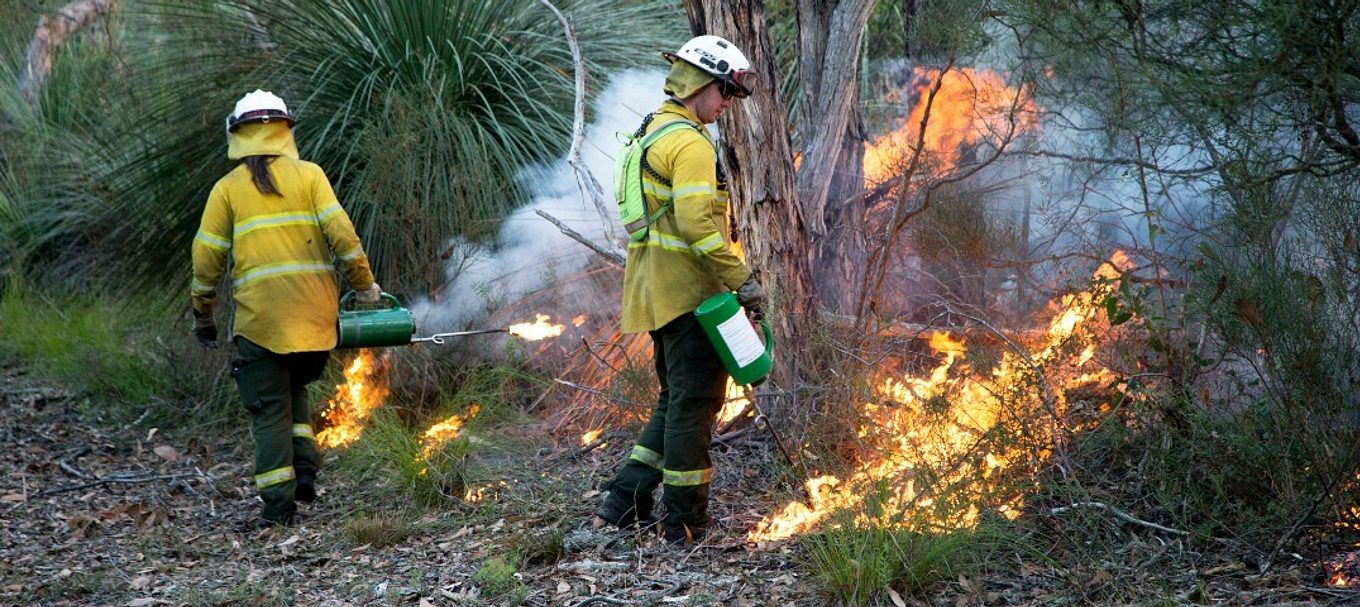
Discover why prescribed burns are important in managing national parks
Every spring and autumn, National Parks and Wildlife Service’s (NPWS) Fire Management team undertake prescribed burns in our state’s parks and reserves and work with the Country Fire Service (CFS), local councils and private land owners to prepare for bushfires, but why?
In recent years we’ve seen how ferocious bushfires in Australia, and the world, can be.
With our climate changing and more people living close to the bush, it’s more important than ever to ensure our natural environment is carefully managed.
In South Australia, we have a long-term program of managed burning to reduce the spread and intensity of bushfires and protect communities.
The aim is to help manage the intensity and extent of bushfires across the landscape and provide safer access for firefighters if a bushfire does take hold.
These burns are known as prescribed burns.
Prescribed burns are planned years in advance to create a patch-work of strategic low bushfire hazard areas across the landscape.
Why are most prescribed burns in SA undertaken in spring and autumn?
The majority of prescribed burns are undertaken in spring and autumn when there is enough moisture in the landscape to make them easier to control, but weather conditions are warm and dry enough to achieve the desired fire intensity.
The Bureau of Meteorology is consulted and a burn is only scheduled if the conditions are appropriate.
While there is a schedule of burns programmed each year, weather conditions are the main dictator of whether they can go ahead or not. Each year will be different.
It’s a big job that needs to be done in a small window of time so the NPWS Fire Management team works with multiple parties including the CFS, SA Water, private landholders and local councils to ensure potential bushfire fuels are reduced in strategic areas of public and private land.
What is an ecological burn?
Ecological burns are prescribed burns that focus on improving habitat for threatened plants and animals, as well as reducing bushfire risk.
Through years of research and working with First Nations people, we know specific landscapes need fire to regenerate and to manage habitat for certain species of native plants and animals.
If some landscapes are not burnt for a long time they change. There is less diversity, as some plant species don't have the opportunity to germinate new seedlings and grow, changing the ecology of the area.
This can negatively impact the animals that live there as they no longer have the shelter or food sources they need.
Ecological burns have specific objectives to remedy these issues, and bring back important habitats and threatened plant species
What happens to the private properties that are located near parks?
NPWS works with dozens of private landholders and local CFS brigades each season as part of a program to reduce fire hazards for properties close to parks because fires don’t stop at fence lines.
NPWS fire management teams also contribute to bushfire response supporting CFS by attending bushfires on both private and public lands, as well as maintaining fire tracks and reducing fuel loads by mechanical slashing.
Learn more – go behind the scenes to discover the unique jobs and passionate people that care for South Australia’s environment:Insider Guide: Managing FireandInsider Guide: managing fire from the skies.





